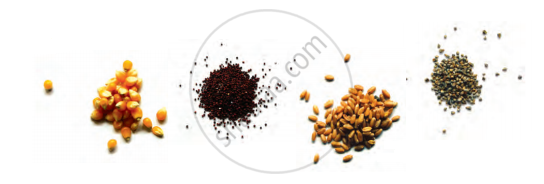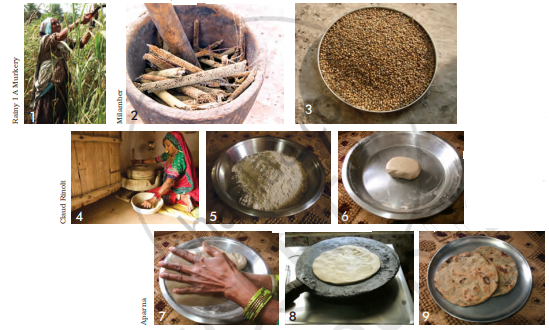Advertisements
Advertisements
प्रश्न
Visit a farm near your area. Observe and talk to the people there. Write a report.
उत्तर
One of my friends has a farm on the outskirts of the city. There is a big house at one edge of the farm. The house has a big courtyard. There is a tractor, a threshing machine, and many small farm types of equipment kept outside the house. There are 5-6 people who live permanently at my friend’s farm.
They have been working on this farm for the last many years. At present, the whole farm is full of mustard crops. It presents a beautiful landscape of yellow and green colors. There is a small orchard also on the farm. It has trees of many fruits like mango, guava, pomegranate, lemon, etc. I can also see many packets of synthetic fertilizers kept in the farmhouse. There are some jars of insecticides kept in a comer.
APPEARS IN
संबंधित प्रश्न
Which are the different festivals related to farming, celebrated in different seasons? Find out more about anyone such festival and write in your notebook –
The name of the festival, in which season is it celebrated, in which states of India, what special foods are made, is it celebrated only at home with the family, or together with many people.
Talk to the elders in your family and find out if there were some special foods cooked earlier that are not cooked anymore?
Find out about the crops - cereals, vegetables, pulses - that are grown in your area. Of those, is there anything that is famous across the country?
Can you recognize these grains?

Hasmukh said, “With profits from our fields, we can progress.” What is your understanding of ‘progress’?
Damjibhai’s son Hasmukh chose to become a farmer like his father. Hasmukh’s son Paresh is not a farmer, but a truck driver. Why would he have done so?
What questions come to your mind about farmers and farming? Write some questions in your group and ask a farmer. For example, how many crops do they grow in a year? Which crop needs how much water?
What can you see in each picture on the next page?
In picture 2 you can see the bajra cobs in the mortar (okhli, used for crushing). The cobs are crushed with a pestle (moosli) and the seeds are separated from the cob. You can see the separated seeds in picture 3. Now this work is also done by big machines, like threshers. We call both these different ‘technologies’ – using our hands or big machines – to crush the seeds.
What technology could have been used to cut the stem in picture 1? What do you think is being done in the grinder (chakki ) in picture 4? What ways (technologies) would have been used to do the work shown in pictures 5 and 6? You can see that the dough is ready in picture 6. When do you think a sieve (chhalni ) would have been used? Discuss each step in detail, in any language you wish to use.

What would happen if all the farmers were to use only one kind of seed and grow only one kind of crop?
What technology could have been used to cut the stem in picture 1?
